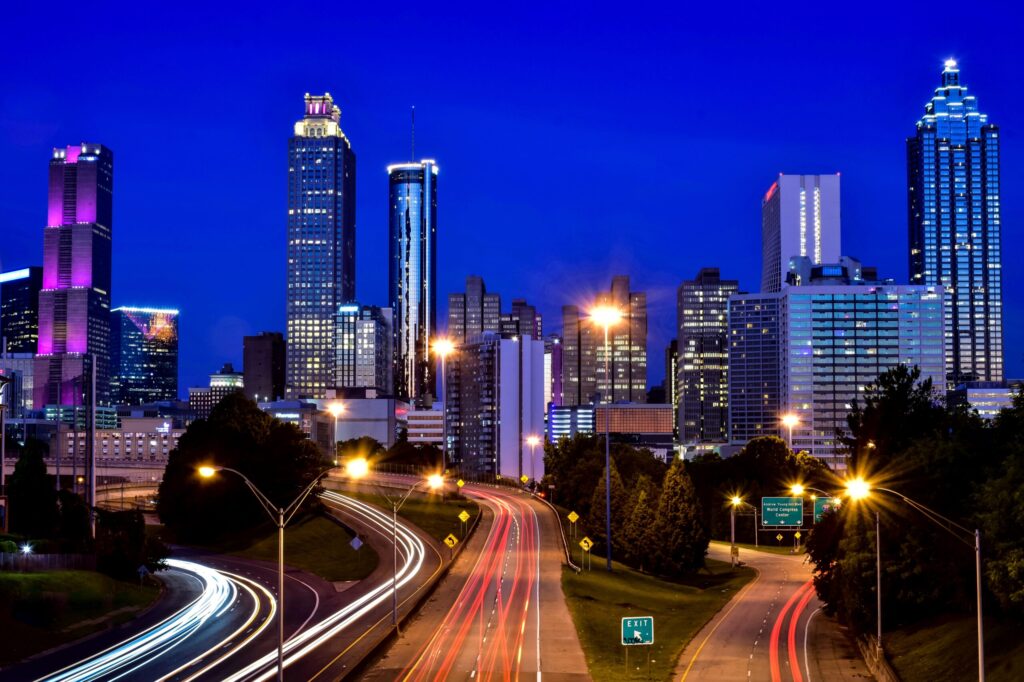Wireless streetlight systems offer benefits not only to utilities and cities, but to the citizens who use the roads every day
Municipal smart street lighting is revolutionizing the way public lighting systems are controlled and managed by a Central Management System (CMS). This approach wirelessly connects streetlights, enabling municipalities and utilities to save money, reduce energy consumption, and create safer, more livable environments. What follows are some of the benefits of these systems—for both government and the “person on the street.”
1.- Energy savings.
One of the most significant benefits of adopting municipal smart street lighting is the substantial reduction in energy consumption and carbon emissions. Smart lighting systems can be programmed to dim or turn off when areas are not in use. For instance, a city park’s lighting could be dimmed after closing hours, or streetlights along a residential street could be scheduled to dim during the late-night hours when pedestrian and vehicle traffic is minimal.
2.- Customer service.
These systems also enable innovative customer services, including flexible time-of-use tariffs. Utilities can offer dynamic pricing based on real-time energy demand, which encourages efficient energy usage and conservation during peak hours. For example, lower electricity rates during off-peak hours could incentivize electric vehicle owners to charge their vehicles at night when demand is low.
3.- Streamlined maintenance.
Accurate information on lighting assets’ location allows for more efficient maintenance and quicker response times to outages or issues. In the event of a natural disaster or extreme weather event, maintenance crews can rapidly identify damaged streetlights and prioritize repairs, ensuring that critical areas such as evacuation routes and emergency shelters are well-lit. In addition, real-time fault detection in the CMS can enable improved maintenance. For instance, if the system detects a pattern of frequent outages in a particular area, it can schedule a preventative maintenance check to identify and address the underlying issue. This proactive approach leads to more reliable public lighting and overall enhanced urban environments. Advanced diagnostics help pinpoint the root cause of a fault, allowing maintenance crews to address issues more effectively. For example, a streetlight with a faulty sensor could be identified remotely, and a crew dispatched to replace the sensor, avoiding the need for multiple site visits.
4.- Safety.
Remote monitoring of lights’ status and performance enables city officials to maintain optimal illumination levels, thereby enhancing public safety. Busy pedestrian crossings, parks and public spaces can be monitored to ensure adequate lighting during high-traffic hours.
5.- Lighting in real time.
Remote management through a CMS dashboard enables authorized personnel to access the system from any location, making real-time adjustments to lighting levels, schedules and policies as needed. This level of control allows cities to quickly and easily adapt lighting to special events, emergencies or changing community needs.
6.- Less labor.
GPS location data for each fixture combined with automatic network lighting control commissioning simplifies the commissioning process and reduces labor costs. Interoperable systems for seamless data transfer make it possible to integrate smart lighting systems with other city infrastructure, such as traffic signals, security cameras and environmental sensors. This interconnected network creates a comprehensive, connected city experience that enhances overall urban functionality and resilience.
7.- Better billing, more revenue.
By connecting streetlights, utilities can reduce operational overhead and maintain updated asset databases. Improved inventories enable accurate billing and metered time-of-use tariffs as municipalities can verify bill accuracy and measure the impact of their energy-saving initiatives, while utilities can provide precise usage data to improve billing accuracy. This level of transparency helps to build trust between customers, utilities and municipalities, encouraging further adoption of energy-efficient practices. These systems can also be monetized. For instance, a city might choose to offer advertising space on smart streetlight poles, generating additional revenue. Smart streetlights also contribute to the creation of vibrant, livable spaces with lower crime rates and reduced carbon footprints.
For municipalities, smart streetlight installations can serve as a launching pad for broader smart-city initiatives. Building on intelligent streetlight architecture, cities can integrate with other systems or introduce new ones, fostering greener, safer and more livable urban environments. For example, smart street lighting networks could be integrated with traffic management systems to optimize traffic flow, or with environmental monitoring systems to track air quality and noise levels. The possibilities are vast and the benefits of adopting smart street lighting are clear—improved energy efficiency, reduced costs, enhanced safety, and the foundation for a connected, sustainable future.


